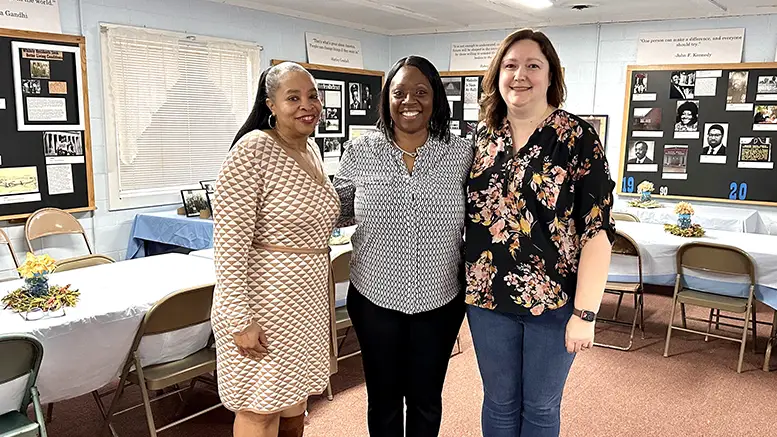By Susan Fisher, PR Supervisor at Muncie Public Library—
MUNCIE, IN—February is Black History Month and those who want to learn more about local, Black history can visit the Shaffer AME Church Chapel Museum or discover the newly created digital collection of the Shaffer Chapel Museum artifacts recently archived through a partnership between Muncie Public Library (MPL) and Shaffer Chapel.
The Indiana Historical Bureau and The Delaware County Historical Alliance installed a plaque at Shaffer Chapel in 1996 to recognize the building’s significance. The plaque’s inscription reads as follows, “Structure, circa 1893, is Muncie’s oldest standing public school building. Purchased by church congregation, circa 1928. Rallying point in August 1930 when bodies of two African American men, lynched in Marion, were brought to Muncie for embalmment by church’s pastor J.E. Johnson, a mortician.”
Tenisha Harris, who serves as Manager at the MPL Connection Corner, a technology and creative hub located at the corner of Centennial and Elgin in the Whitely Neighborhood, provided the inspiration for the partnership with MPL after visiting the Shaffer Chapel Museum. “I know that a lot of time we (as African Americans) assume someone has a copy somewhere of important documents and other items, but that is often not the case,” she said. “I previously worked at Carnegie Library, and I learned the value of documenting the history of African Americans in Muncie. So many times, our stories are told by others, and we should be telling our story ourselves.” Harris added that her own grandmother recently passed away at 105 years old and Harris regrets that so much of her history is now lost or was only shared by word of mouth.
Harris approached her colleague, Sara McKinley, Carnegie Library Manager and MPL Archivist, and Pastor Rosalind Morris at Shaffer Chapel to suggest the partnership. Morris was thrilled about the project, “This is an exciting and convenient way to share Shaffer Chapel with the city. This project creates an opportunity for us to engage the community to showcase the rich history of Shaffer,” she said.
McKinley was equally enthusiastic about the project. “This digitization project went really smoothly. There are always some technical considerations to plan for when taking equipment to another location for scanning, but we were able to scan everything in a day and only came back once to photograph the church’s flag,” she said. McKinley also commented on other aspects of the project, “The most labor-intensive part of a project like this is preparing the descriptive data that will help researchers find and identify the materials in the digital archives. This often requires additional research to properly identify people in photographs, determine dates, and provide historical context about the collection items. Verifying information with newspaper archives, genealogical records, and even by consulting current members at Shaffer Chapel was very helpful.”
McKinley and Morris both have high hopes for the digitized collection and how it may enhance the community. “We are looking to cultivate and build harmony with our rich history. With Shaffer Chapel museum in Whitely Community, we are able to strengthen our presence and community by honoring the legacy of Shaffer Chapel AME Church. We become partners as a community resource, teaching and sharing history,” said Morris.
McKinley explained that the project fit well with the goals of the Carnegie Library Local History & Genealogy collections, “The library places a special emphasis on preserving local history, providing equal access to research materials, and sharing our communities’ stories. Through studying history, we see ourselves and empathize with others. We gain a sense of belonging and pride of place. I hope this project helps our community discover new stories and inspires a curiosity to learn more by visiting their local museums, libraries, and archives.”
McKinley also echoed Harris’s concern about hidden stories that need to be shared. “I hope this effort raises awareness that we often have history tucked away in unexpected places, such as our own attics and basements. Local libraries and archives may be able to assist in preserving and providing access to that information for future generations,” McKinely said.
To explore the digitized archive collection, follow this link to the MPL website: https://archives.munpl.org/digital/collection/ShafferAME/. To visit the Shaffer Chapel Museum in person, call Pastor Morris at (765) 284-6890 or email the church at shafferchapelamechurch@gmail.com



